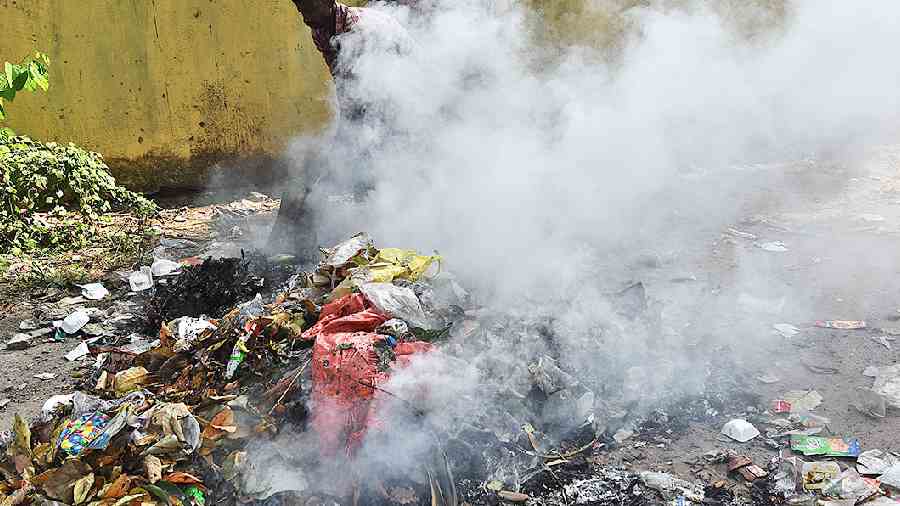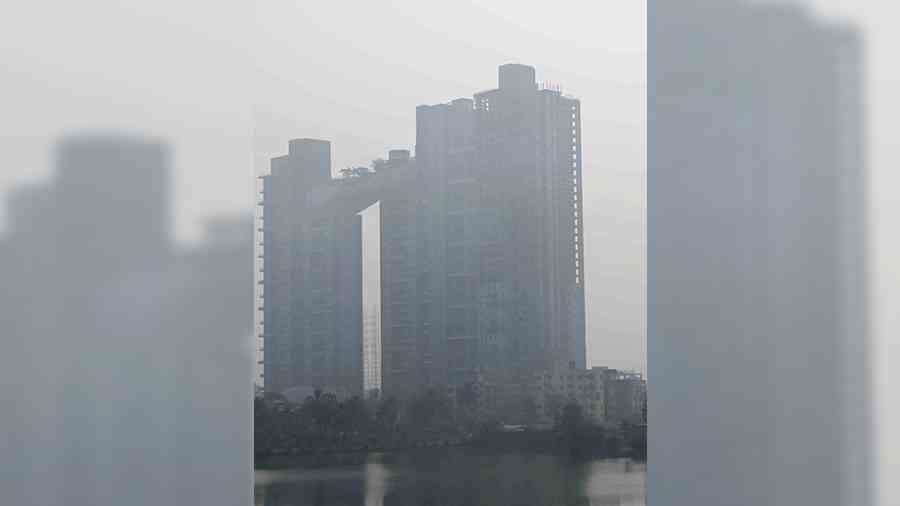Nearly 80 per cent of the total PM2.5 content, the most toxic ultrafine particulate pollutant, in the air in Kolkata and its immediate surrounding is generated locally. On average, only about a fifth of the PM2.5 load enters the city from beyond its borders, says a report prepared by a platform of environment analysts.
They have pointed out the urgent need to take action against the local contributors to combat PM2.5 pollution in the report.
The report prepared by UrbanEmissions.Info is based on pollution data from 2017 and 2019 from 50 cities across India alongside major international cities. Its findings were also mentioned in a recent report by the environmental think tank Center for Science and Environment (CSE).
“This information is collated from multiple agencies ranging from the central pollution control board, state pollution control board, census bureau, national sample survey office, ministry of road transport and highways and publications from academic and non-governmental institutions” reads the UEInfo report; that shows that under business as a usual scenario; the overall PM 2.5 load of the city is set to reach around 95,000 tonnes per year in 2030, increasing from around 88,000 tonnes per year in 2018.
The analysis shows that the transboundary sources contributed about 19 per cent of the total PM 2.5 pollution of Kolkata in 2018; which means almost 80 per cent of the city’s PM2.5 was generated locally. The finding underlines that the city must prioritise reducing its PM2.5 pollution generated within its boundaries,” said Anumita Roy Chowdhury, air pollution expert of the CSE.
The proportion of pollution from outside sources varies from 13 to 31 per cent, depending on the month.
Another independent research by frontline US scientists, published in Atmospheric Pollution Research journal, shows that overall West Bengal receives 46 per cent of its overall air pollution from transboundary sources, less compared to many states at a proportional scale and on a par with the national average.
“Our research, too, shows that the contribution of transboundary pollution in Kolkata’s PM 2.5 load is around 20 per cent”, confirmed Abhijeet Chatterjee, an air pollution scientist from Bose Institute.
The findings have put under the scanner state pollution control board’s recent claim that the state and city receive unusually high transboundary pollution.
“These are satellite-based studies and often do not appropriately reflect the ground realities; however around 20 percent figure of transboundaryPM 2.5 pollution is possible,” PCB chairman Kalyan Rudra said.
Green platform Sabu Mancha, on Tuesday, said the PCB’s recent references to transboundary pollution are nothing but an effort to deflect from their failure in containing air pollution in Kolkata and the rest of the state. “We have consulted several scientists around the country and they clearly said that transboundary pollution cannot be stopped only by planting trees,” said Naba Dutta, secretary of the platform.
“We are demanding the chief minister’s intervention to ensure efforts to minimise pollution from the major sources like transport, construction, industries and waste burning,” added Dutta.


